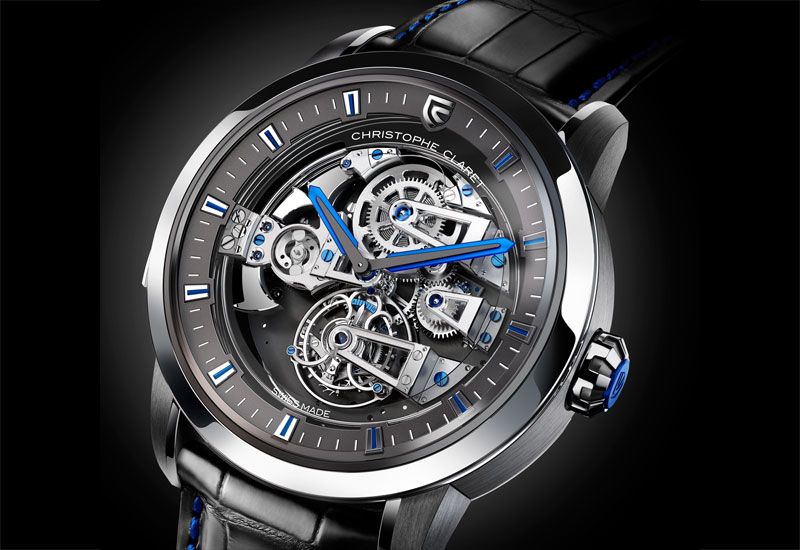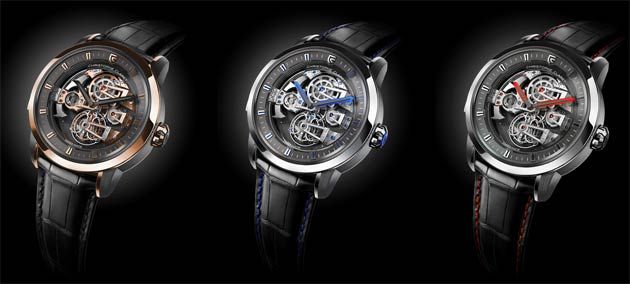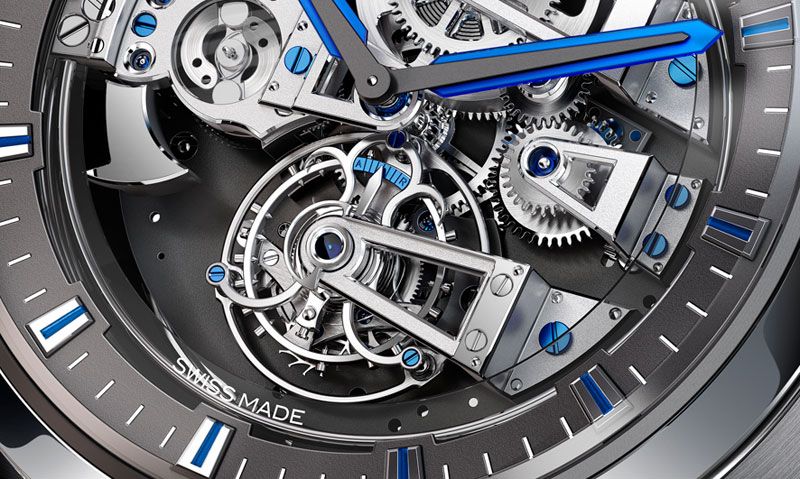Christophe Claret Soprano

A soprano isn’t merely a type of voice used in choral or operatic singing; it is also the name of the latest creation of master watchmaker Christophe Claret and his team of top craftsmen. The combination of highly creative minds and the ability to transform dreams into reality gives us watch lovers some amazing stuff to behold.

Over the past couple of years each new creation of Christophe Claret had the ability to blow ones mind, or mine at least. A prime example was the Dual Tow, featuring a set of rubber belts to display the hours and minutes, and a set of intricately crafted planetary gears to drive the chronograph-function. Then there was the 21 Blackjack, which could be considered to be a miniature casino, allowing the owner to play blackjack, roulettes, and a game of dice all in one. This feat of engineering was followed by X-TREM-1, a totally out of the box watch with two tiny hollow spheres suspended in a clear sapphire tube using magnetic fields, displaying the hours and minutes.

The recently announced Christophe Claret Soprano combines two of the most critically acclaimed complications inside an attractive 45mm wide case, made of either white or red gold. The case is comprised of a bezel and caseback in white or red gold, sandwiching a titanium caseband. The caseband is made of grade 5 titanium for reasons I will explain in a bit. The case is fitted with a hand sewn black alligator-leather strap with black stitching for the red gold version, red or blue stitching for the white gold version. The buckle is comprised of the same material as the case, red or white gold with titanium.

Like all Christophe Claret creations, the Soprano is fitted with a tourbillon. In this case a flying tourbillon, located at 6 o’clock, that rotates once every sixty seconds and is thus usable as a small seconds counter. The cage is held in place with a Charles X type stepped bridge, of which several more can be found gazing upon the open worked movement. These type of bridges allow for a part to be fitted on a single arm, rather than a bridge mounted on both sides. Together with the lack of a dial this allows for a deep view into the movement. The tourbillon is also fitted with a Parachute shock protection, first invented by Abraham-Louis Breguet. I haven’t been able to find out what that might mean. Anyone out there that can clarify it for me? I am still learning more about this business every single day.

Anyhow, the tourbillon is accompanied by a minute repeater, and not just any minute repeater. It features four separate gongs and an equal amount of hammers to strike them. Unlike ‘normal’ minute repeaters, the gongs of the Soprano circle the movement twice instead of once, so-called Cathedral gongs. The caseband, made from grade 5 titanium, also adds to the clarity of the sound. Grade 5 titanium is known for its acoustic capabilities. With a Minute Repeater it is key that the sound can travel freely throughout the case, making sure it sounds loud and crisp enough to be heard. Upon activating the slide on the left side of the case, the hammers and gongs play the Westminster chimes.
The video takes around 4 minutes and towards the end you’ll hear the sweet tones of the Westminster chimes.
Each separate gong has to be made to a level of accuracy that is beyond me. The choice of materials, the length and even the diameter all have to be as precise as possible to produce a truly accurate musical note. Furthermore, a hammer must strike the gong forcefully, but retreat fast enough not to strike the gong again due to vibrations following the first strike.
The real Westminster chimes can be found in the bell-tower of Westminster palace in London, England. This bell-tower is more commonly known as the Big Ben. The original four-note tune was written in 1793 for a church in England. It was selected as the melody for the Westminster palace bell-tower (a.k.a. Big Ben) in 1859, thus becoming the Westminster chimes we know today. The repeater mechanism in the Soprano features a silent inertia governor, silently spinning and regulating the speed of the chiming gongs when the mechanism has been activated.

A nice touch is the transparent barrel for the mainspring, making it into a winding efficiency-meter. When fully wound the main spring rests in the centre of the barrel. The mainspring is positioned at 12 o’clock on the dial side of the watch. The ring wrapped around the inside of the case presents the numerals for the hours, with the Double-C logo as 12-hour marker. The same ring is mounted on the back side, partly hiding the four gongs. They are still a little visible through the decorative cutout comprised of musical notes, the brand name and “Westminster”.

The movement inside this beauty is a hand-wound mechanical movement referred to as TRD98; 450 parts, 39 jewels, 72 hours of power reserve, balance oscillating at 21,600 vph.
All in all this is a masterpiece with a couple of truly magnificent complications and innovations packed into an elegant red or white golden case. For this creation to adorn your wrist, you need a pretty healthy bank; the price is approximately $ 500,000 USD.
More information can be found on the website of Christophe Claret or on their Facebook-page.
This article is written by Robin Nooij, contributing writer for Monochrome Watches.




2 responses
Parachute AntiShock System in Breguet Tradition 7027
http://luxwatch.ua/other_pictures/News/Breguet/Parachute/Pic_Parac%207027_YG_zoom.jpg
Thanks Ivan!